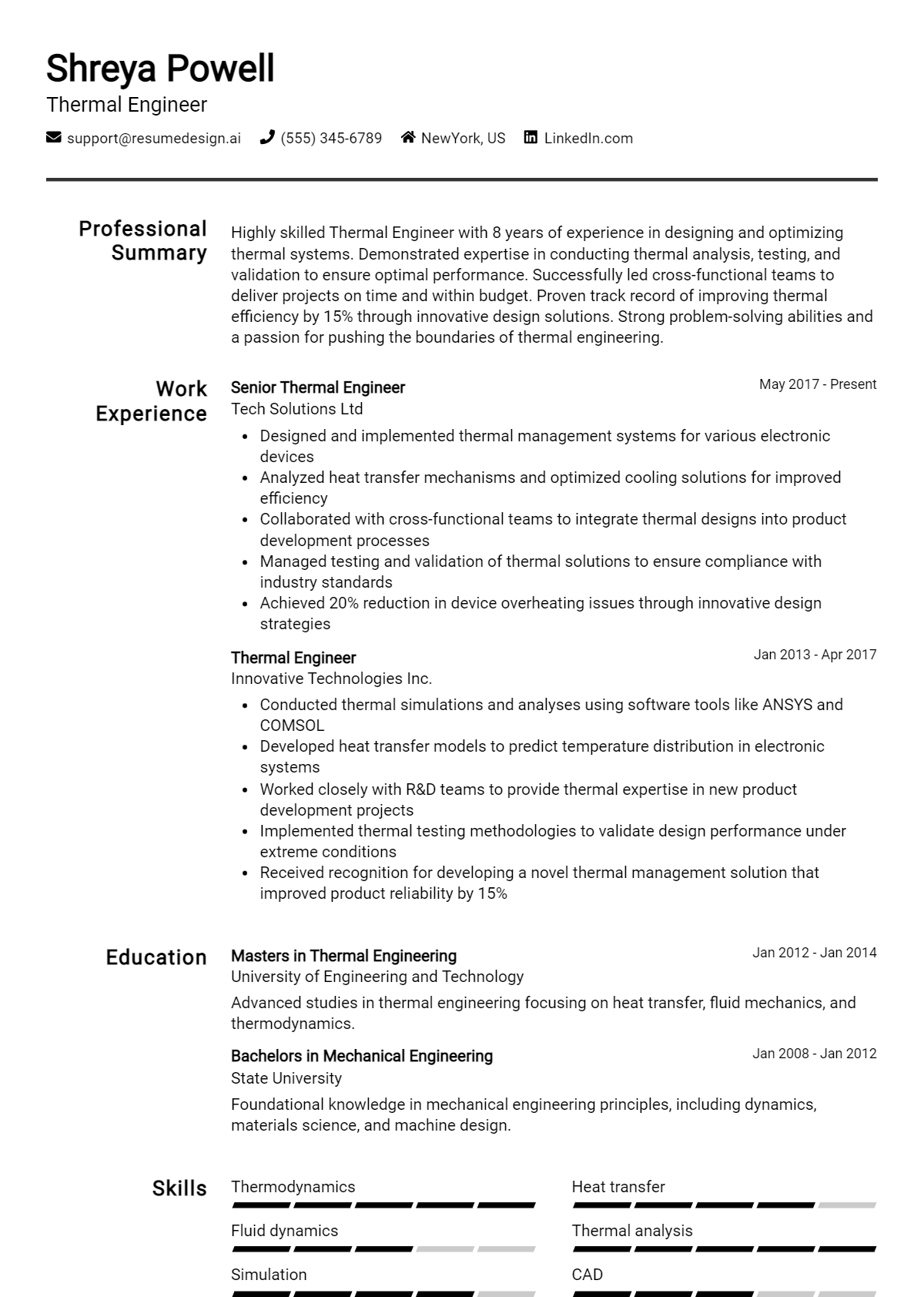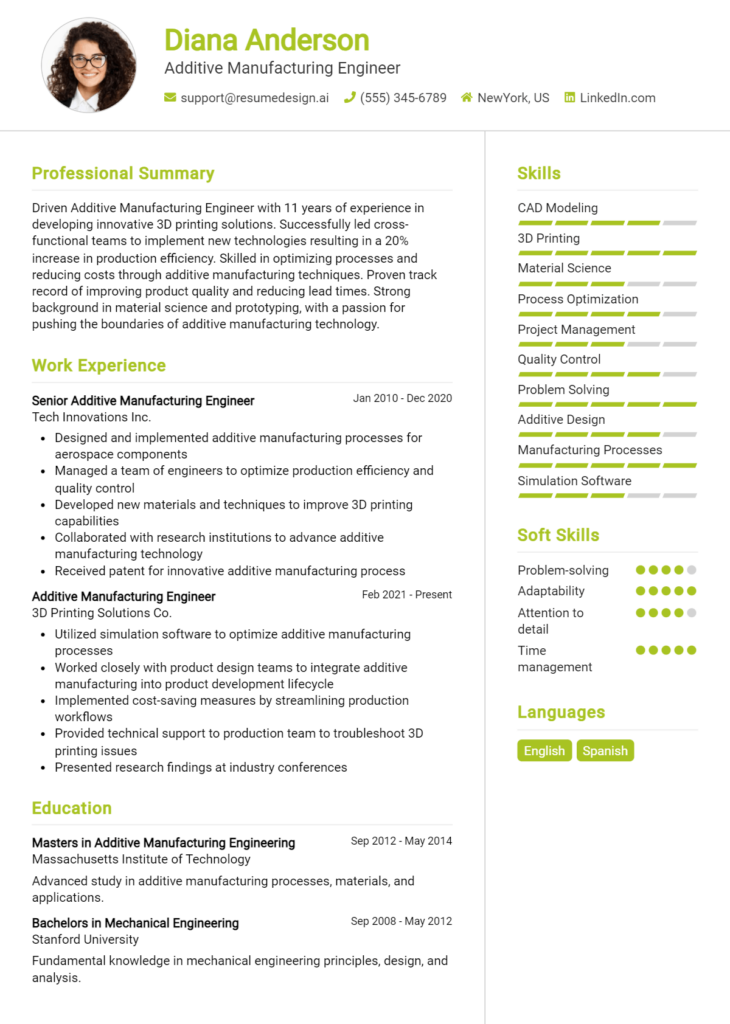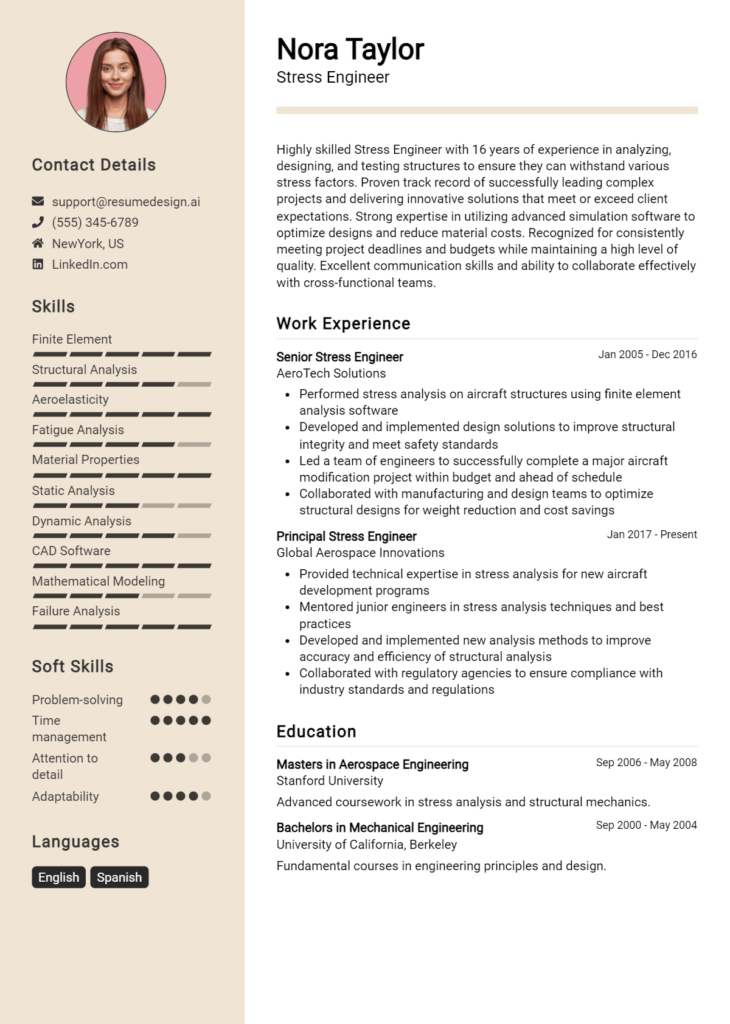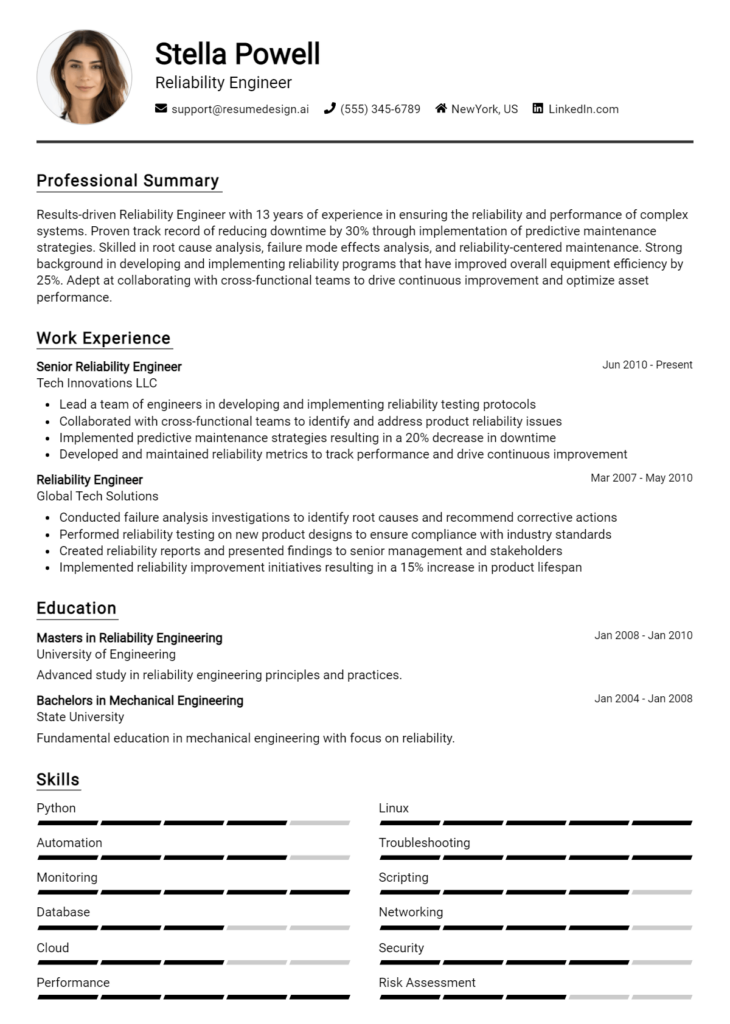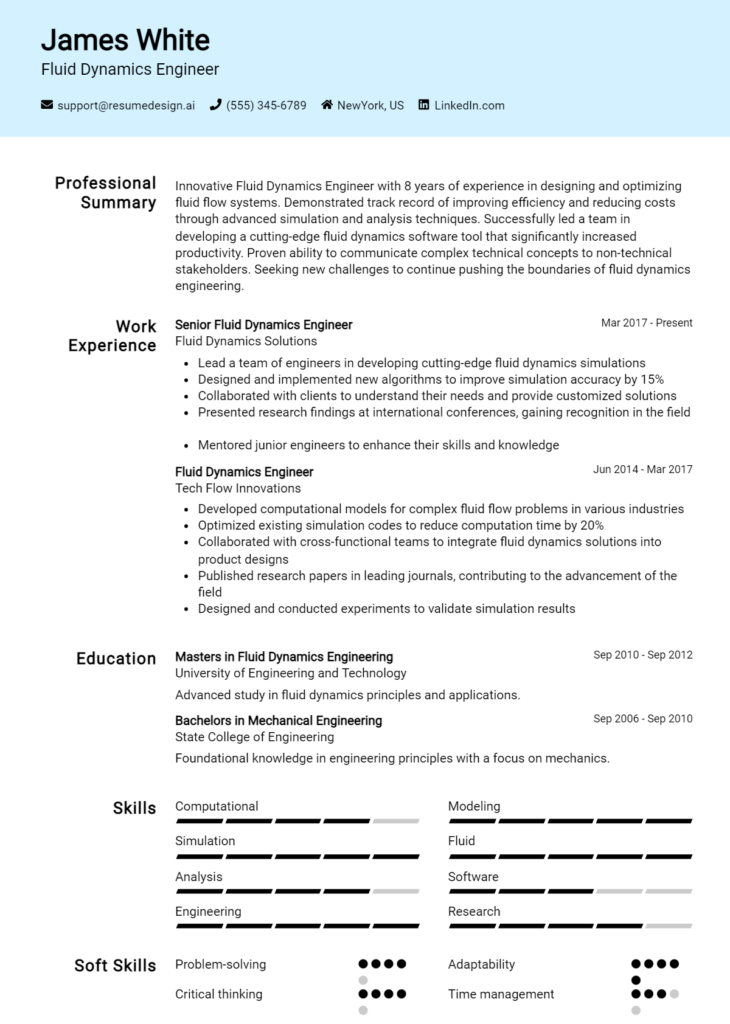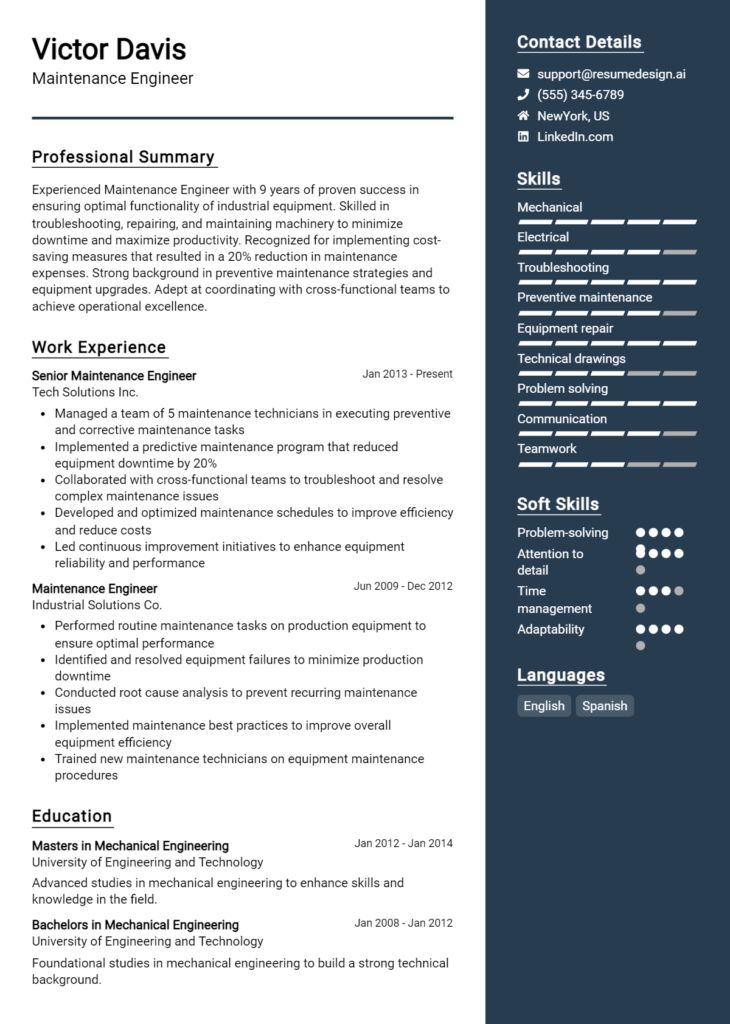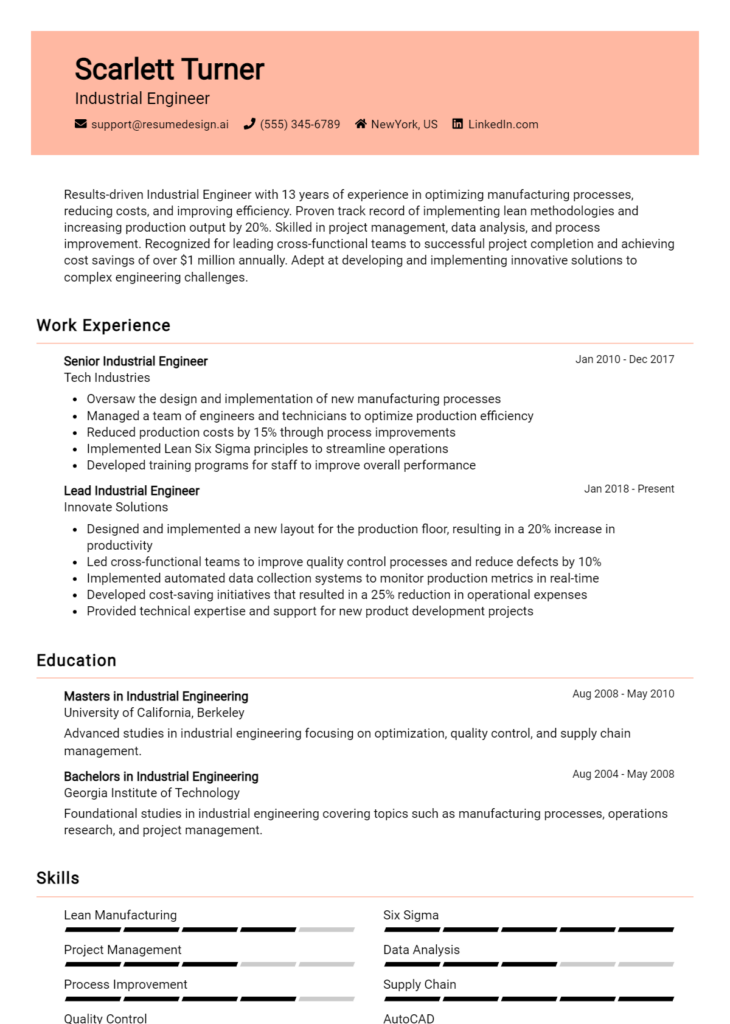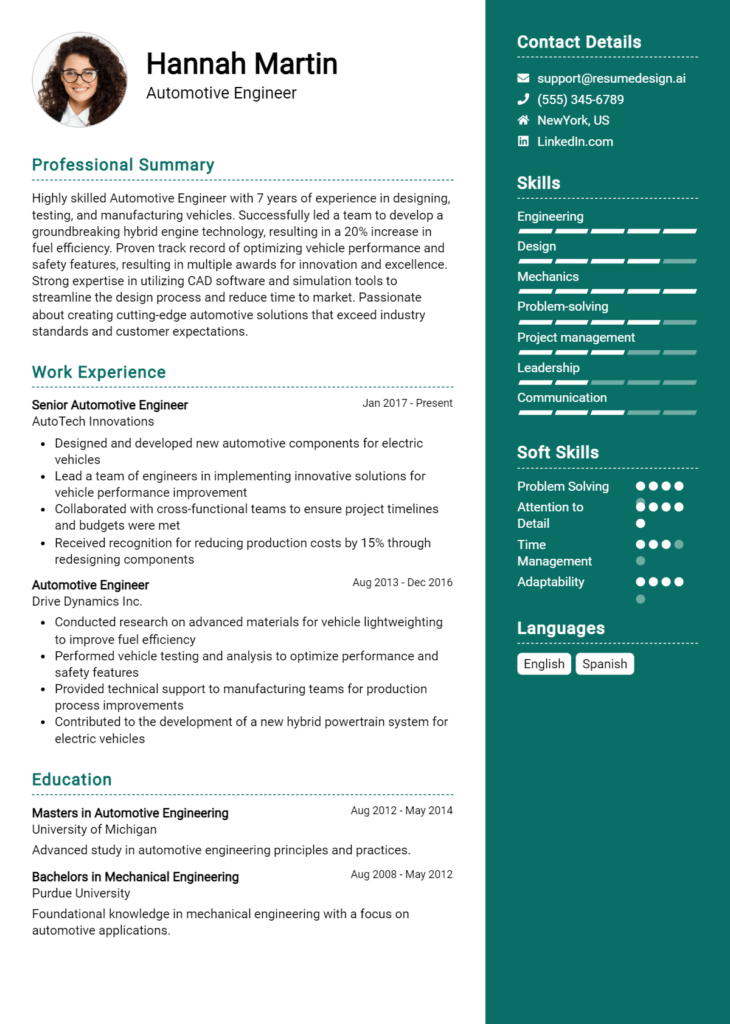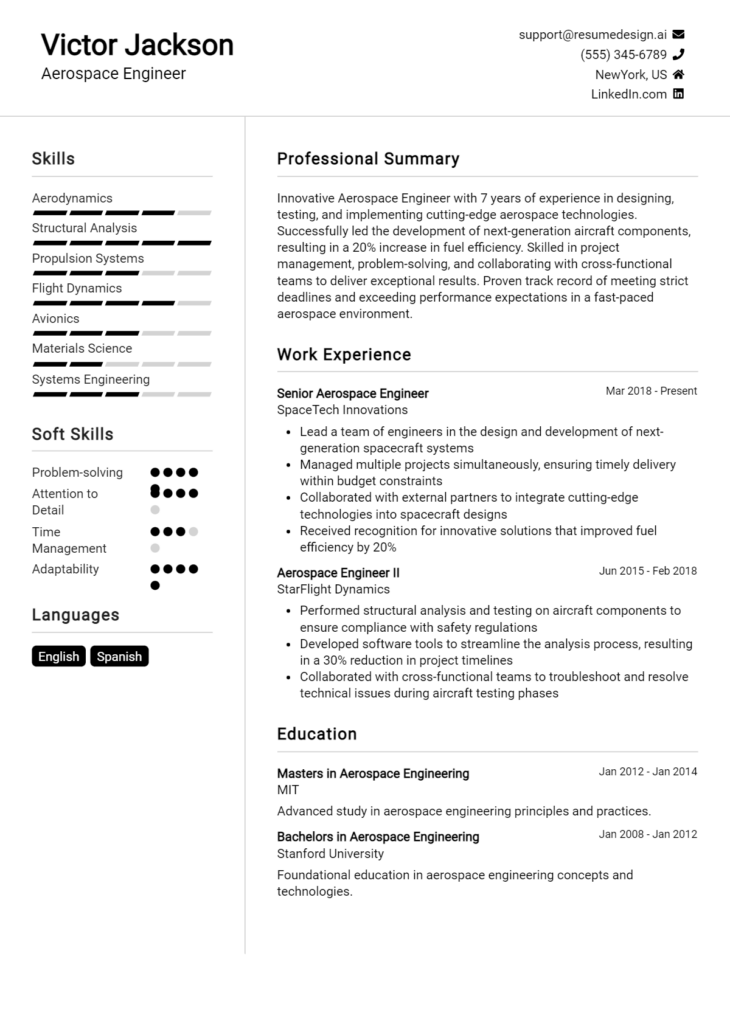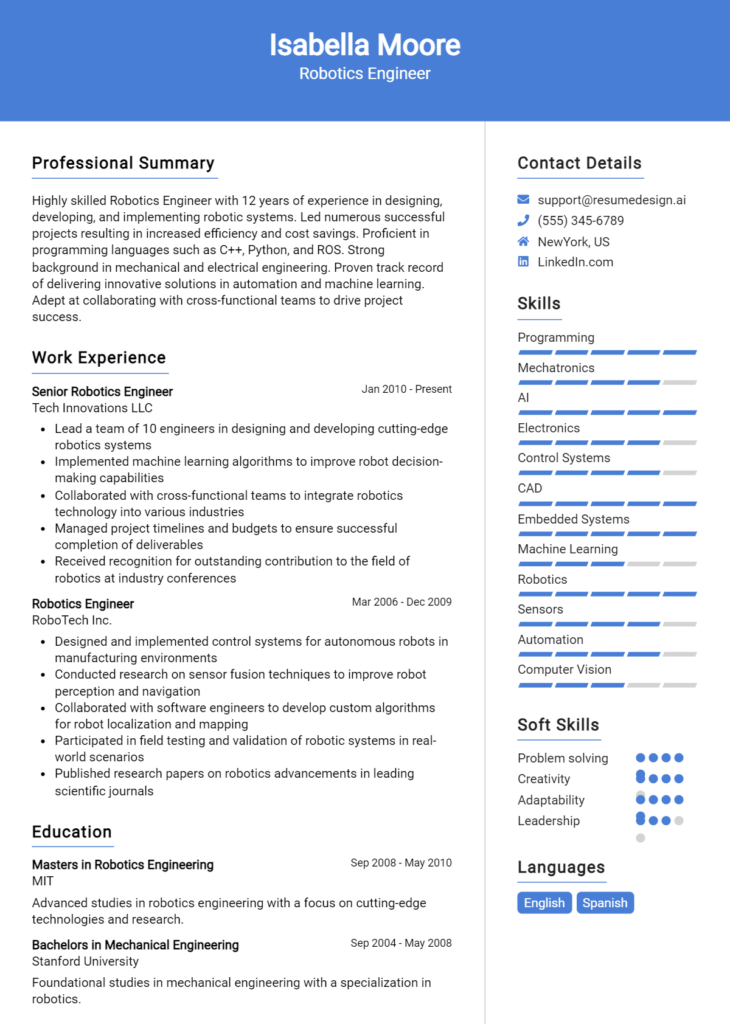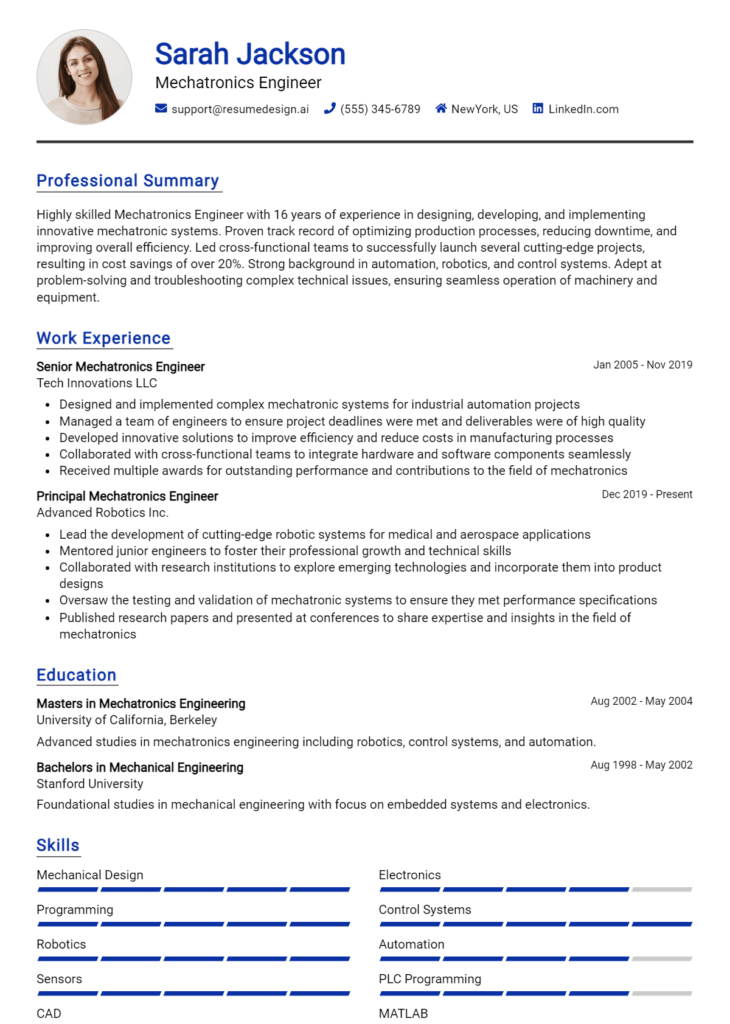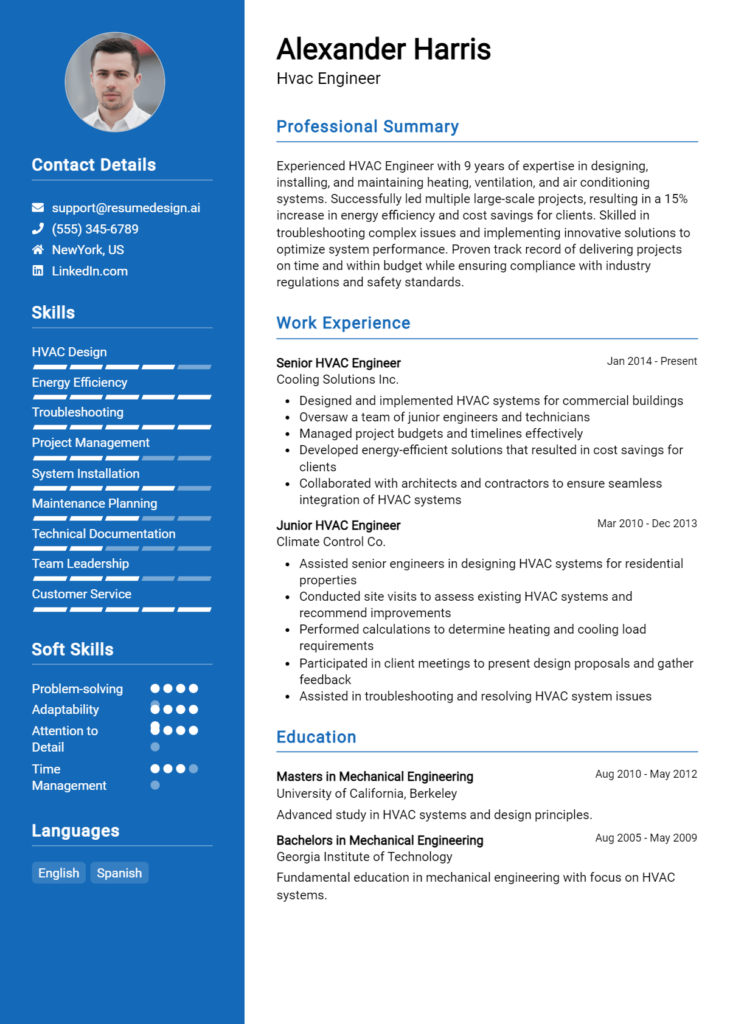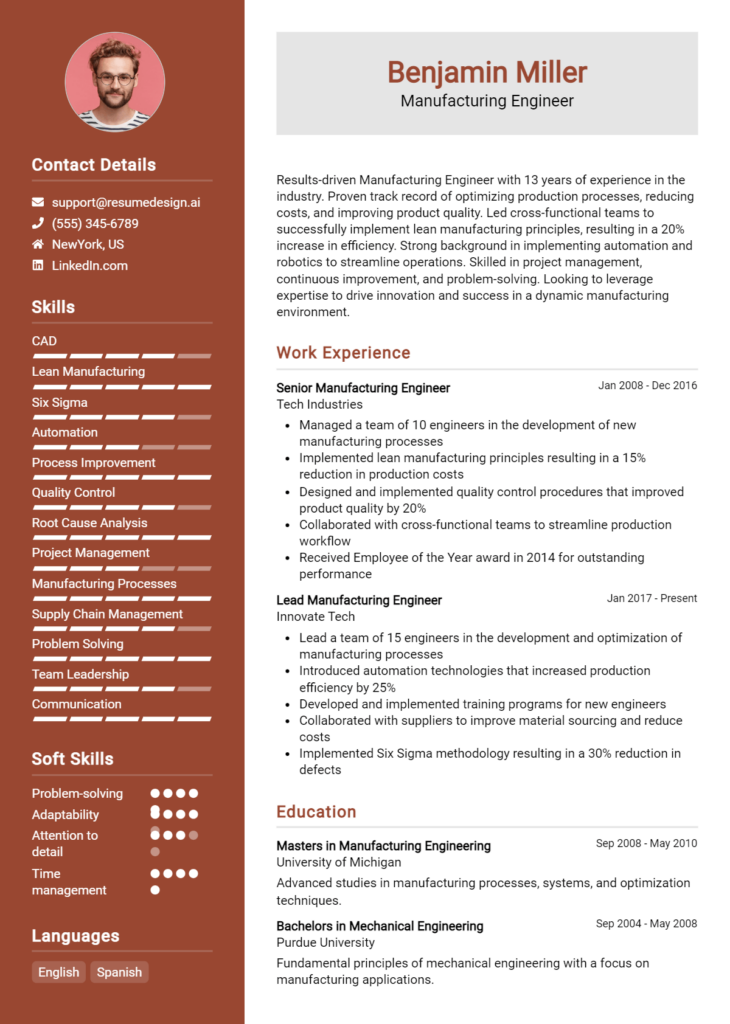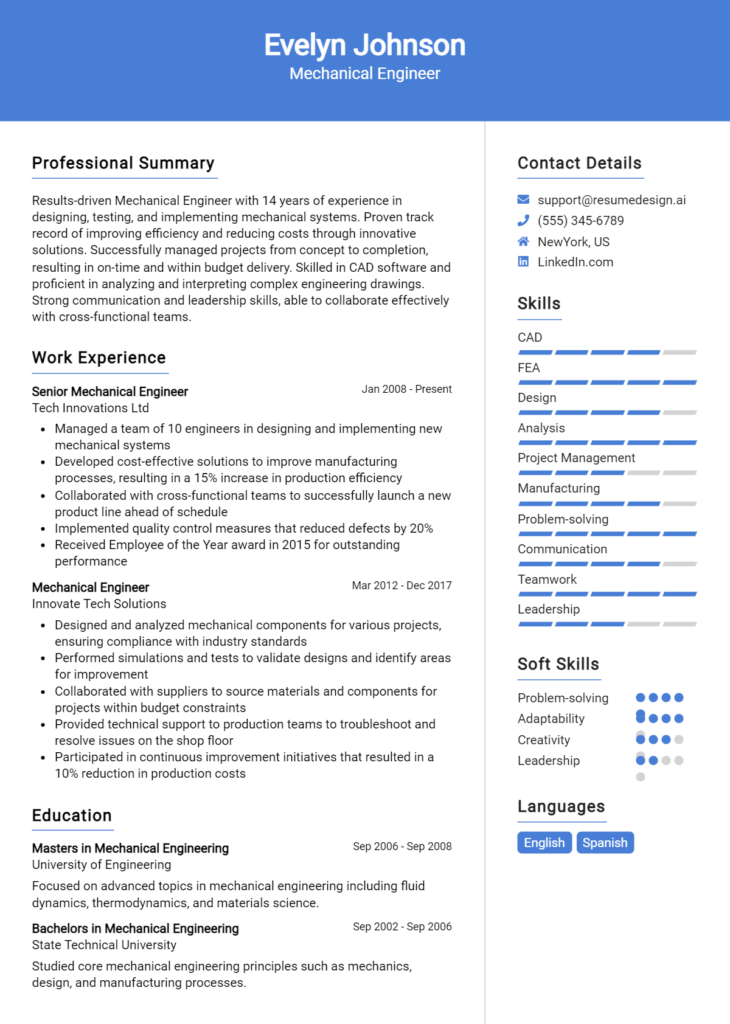Thermal Engineer Core Responsibilities
A Thermal Engineer plays a crucial role in ensuring efficient thermal management within various systems and products. Key responsibilities include conducting thermal analysis, designing cooling systems, and collaborating with cross-functional teams such as mechanical, electrical, and manufacturing engineers. The ideal candidate must possess strong technical skills, operational awareness, and robust problem-solving abilities. These competencies directly contribute to the organization’s objectives by enhancing product performance and reliability. A well-structured resume can effectively showcase these qualifications, highlighting the candidate's impact in achieving organizational goals.
Common Responsibilities Listed on Thermal Engineer Resume
- Conduct thermal simulations and analyses to optimize system performance.
- Design and implement effective cooling solutions for various applications.
- Collaborate with multidisciplinary teams to integrate thermal management in product design.
- Perform tests and evaluations to assess thermal efficiency and reliability.
- Identify and troubleshoot thermal issues in prototypes and production models.
- Develop and maintain thermal documentation and reports.
- Implement best practices for thermal design and analysis methodologies.
- Stay updated with industry trends and advancements in thermal technology.
- Provide technical support during product development and lifecycle management.
- Participate in research and development projects to innovate thermal solutions.
High-Level Resume Tips for Thermal Engineer Professionals
In today's competitive job market, a well-crafted resume is crucial for Thermal Engineer professionals seeking to make a lasting impression on potential employers. Your resume often serves as the first point of contact, showcasing your technical skills, relevant experience, and career achievements. A strong resume not only highlights your qualifications but also reflects your understanding of the industry and your ability to contribute to an organization’s success. This guide will provide practical and actionable resume tips specifically tailored for Thermal Engineer professionals, ensuring that your application stands out among the rest.
Top Resume Tips for Thermal Engineer Professionals
- Tailor your resume to match the job description, using keywords and phrases that align with the role.
- Showcase relevant experience by highlighting projects and roles that directly relate to thermal engineering.
- Quantify your achievements with specific metrics, such as energy savings, efficiency improvements, or project timelines.
- Highlight industry-specific skills, such as proficiency in thermal analysis software or knowledge of heat transfer principles.
- Include certifications and licenses relevant to thermal engineering, such as Professional Engineer (PE) status.
- Use a clean and professional format that enhances readability and makes key information easy to find.
- Incorporate a summary statement that succinctly conveys your career objectives and value proposition.
- List any professional affiliations or memberships that demonstrate your commitment to the field.
- Include technical skills relevant to thermal engineering, such as computational fluid dynamics (CFD) or finite element analysis (FEA).
- Keep your resume concise, ideally one page, while ensuring that all relevant information is included.
By implementing these tips, Thermal Engineer professionals can significantly enhance their resumes, increasing their chances of landing interviews and ultimately securing positions in their desired field. A focused and well-structured resume not only showcases qualifications but also conveys professionalism and a proactive approach to career advancement.
Why Resume Headlines & Titles are Important for Thermal Engineer
In the competitive field of thermal engineering, a well-crafted resume headline or title serves as a powerful tool to capture the attention of hiring managers. It functions as a succinct summary of a candidate’s key qualifications, effectively showcasing their expertise and professionalism in just a few words. A strong headline not only highlights the applicant's relevant skills and experiences but also aligns with the specific job being applied for, making it easier for recruiters to quickly assess the candidate's suitability for the role. By being concise, relevant, and impactful, a compelling resume title can significantly enhance the chances of standing out in a crowded job market.
Best Practices for Crafting Resume Headlines for Thermal Engineer
- Keep it concise: Aim for no more than 10-12 words.
- Be role-specific: Use terminology and keywords relevant to thermal engineering.
- Highlight key skills: Focus on your most relevant qualifications or experiences.
- Use action words: Start with powerful verbs to convey your expertise.
- Tailor to the job: Customize your headline for each application to reflect the job description.
- Showcase accomplishments: Incorporate quantifiable achievements if possible.
- Avoid clichés: Steer clear of overused phrases that lack originality.
- Maintain professionalism: Ensure the tone reflects your expertise and the industry standards.
Example Resume Headlines for Thermal Engineer
Strong Resume Headlines
Innovative Thermal Engineer Specializing in Energy Efficiency Solutions
Experienced Thermal Engineer with 5+ Years in HVAC System Design
Results-Driven Thermal Engineer Focused on Sustainable Energy Technologies
Thermal Analysis Expert with Proven Track Record in Product Development
Weak Resume Headlines
Engineer Looking for a Job
Thermal Engineer with Experience
Professional in Engineering
The strong headlines are effective because they are specific, clearly communicating the candidate's area of expertise and relevant accomplishments. They draw attention by incorporating action-oriented language and relevant keywords, making it easy for hiring managers to recognize the candidate's qualifications at a glance. In contrast, the weak headlines fail to impress due to their vagueness and lack of specificity, providing no real insight into the candidate's skills or experiences. This makes it challenging for recruiters to see the value the applicant could bring to their organization.
Writing an Exceptional Thermal Engineer Resume Summary
A well-crafted resume summary is essential for a Thermal Engineer, as it serves as a powerful introduction that quickly captures the attention of hiring managers. This brief yet impactful section showcases key skills, relevant experience, and notable accomplishments that align with the specific demands of the role. A strong summary can effectively differentiate a candidate from others by providing a snapshot of their professional value, making it crucial to keep it concise, targeted, and tailored to the job application at hand.
Best Practices for Writing a Thermal Engineer Resume Summary
- Quantify Achievements: Use specific numbers and metrics to demonstrate your impact in previous roles.
- Focus on Relevant Skills: Highlight technical skills and proficiencies that are directly applicable to thermal engineering.
- Tailor to Job Description: Customize the summary to reflect the requirements and responsibilities outlined in the job posting.
- Be Concise: Aim for 2-4 sentences that deliver maximum information with minimal wordiness.
- Use Action Verbs: Start sentences with strong action verbs to convey proactivity and effectiveness.
- Showcase Problem-Solving Abilities: Emphasize your ability to identify and resolve thermal challenges efficiently.
- Incorporate Industry Keywords: Use terminology and phrases commonly found in thermal engineering to resonate with hiring managers.
- Reflect Professional Growth: Briefly mention your journey and how your experiences have prepared you for the role you're seeking.
Example Thermal Engineer Resume Summaries
Strong Resume Summaries
Dynamic Thermal Engineer with over 5 years of experience in optimizing heat transfer systems, resulting in a 30% reduction in energy consumption for high-performance manufacturing processes. Proficient in computational fluid dynamics (CFD) and thermal analysis software.
Results-driven Thermal Engineer with a proven track record of designing and implementing innovative cooling solutions, leading to a 25% increase in system efficiency. Skilled in conducting thermal simulations and analysis to enhance product performance.
Dedicated Thermal Engineer with expertise in thermal system design and a history of successful project management, achieving a 40% decrease in thermal-related failures in critical applications. Strong knowledge of heat exchanger design and thermal regulations.
Weak Resume Summaries
Thermal Engineer with experience in the field. Looking for a job where I can utilize my skills.
I am a motivated individual who has worked in thermal engineering and is interested in opportunities that can help me grow.
The strong resume summaries are considered effective due to their specificity, quantifiable results, and direct relevance to the thermal engineering field. They highlight concrete achievements and technical expertise, making a compelling case to potential employers. In contrast, the weak summaries lack detail, are overly generic, and do not convey any substantial value or impact, which diminishes their effectiveness in attracting the attention of hiring managers.
Work Experience Section for Thermal Engineer Resume
The work experience section of a Thermal Engineer resume is critical as it provides potential employers with insights into the candidate's practical skills and accomplishments in the field. This section not only highlights technical proficiencies, such as thermal analysis, heat transfer, and system optimization, but also showcases the candidate's ability to manage teams, collaborate effectively, and deliver high-quality products under tight deadlines. By quantifying achievements—such as reduced energy consumption by a certain percentage or leading a project that resulted in cost savings—and aligning their experience with industry standards, candidates can significantly enhance their appeal to hiring managers.
Best Practices for Thermal Engineer Work Experience
- Use specific technical terminology relevant to thermal engineering to demonstrate expertise.
- Quantify achievements with metrics, such as percentages, dollar amounts, or timeframes.
- Highlight leadership experiences, including team management and project oversight.
- Emphasize collaboration with cross-functional teams to show versatility.
- Include relevant software and tools used in thermal analysis and modeling.
- Focus on results-driven language to convey the impact of your work.
- Align your experience with industry standards and best practices to show familiarity.
- Tailor your experiences to match the specific requirements of the job you are applying for.
Example Work Experiences for Thermal Engineer
Strong Experiences
- Led a team of 5 engineers in the development of a new heat exchanger design, resulting in a 30% increase in thermal efficiency and a $150,000 cost reduction in production.
- Implemented an advanced thermal simulation model that decreased product testing time by 25%, significantly accelerating the development cycle.
- Collaborated with cross-disciplinary teams to optimize HVAC systems, achieving a 15% reduction in energy consumption for commercial buildings.
- Managed the thermal analysis of a satellite system, ensuring compliance with stringent aerospace standards, which contributed to the successful launch of the project on schedule.
Weak Experiences
- Worked on various engineering projects related to thermal systems.
- Assisted in the analysis of thermal data for some products.
- Participated in team discussions about thermal engineering challenges.
- Involved in general engineering tasks that included thermal aspects.
The examples categorized as strong experiences demonstrate clear, quantifiable outcomes and decisive leadership roles that directly relate to thermal engineering. They highlight specific achievements and impactful contributions, making them compelling to potential employers. Conversely, the weak experiences lack specificity, measurable results, and do not showcase the candidate's unique contributions, making them less impressive and harder for hiring managers to evaluate.
Education and Certifications Section for Thermal Engineer Resume
The education and certifications section of a Thermal Engineer resume is crucial in establishing a candidate's technical foundation and commitment to the field. This section not only highlights the candidate's academic background but also showcases industry-relevant certifications and ongoing efforts towards continuous learning. By providing details about relevant coursework, certifications, and specialized training, candidates can significantly enhance their credibility and demonstrate alignment with the specific requirements of the thermal engineering role they are pursuing.
Best Practices for Thermal Engineer Education and Certifications
- Include relevant degrees such as a Bachelor’s or Master’s in Mechanical Engineering, Aerospace Engineering, or a related field.
- List industry-recognized certifications such as Certified Energy Manager (CEM) or ASHRAE certifications.
- Highlight coursework directly related to thermal dynamics, heat transfer, fluid mechanics, and thermodynamics.
- Include any ongoing professional development or specialized training in emerging technologies related to thermal engineering.
- Use clear and concise formatting to enhance readability and ensure key information stands out.
- Focus on the most recent and relevant qualifications to reflect current knowledge and skills.
- Consider including GPA or honors if they are particularly noteworthy and relevant to the job application.
Example Education and Certifications for Thermal Engineer
Strong Examples
- Bachelor of Science in Mechanical Engineering, University of XYZ, May 2020
- Certified Energy Manager (CEM), Association of Energy Engineers, 2021
- Relevant Coursework: Heat Transfer, Thermodynamics, Fluid Mechanics, and Thermal System Design
- Professional Development: Advanced Thermal Analysis Techniques Workshop, 2022
Weak Examples
- Associate Degree in General Studies, Community College, 2015
- Certification in Basic Computer Skills, 2019
- Coursework: Introduction to Psychology, Art History, and Creative Writing
- Certification in First Aid, 2020
The strong examples listed above demonstrate a clear relevance to the thermal engineering field, showcasing specific degrees, certifications, and coursework that directly align with the skills and knowledge required for the role. In contrast, the weak examples fail to provide pertinent qualifications that would be valuable in a thermal engineering context, reflecting outdated or unrelated educational pursuits that do not enhance the candidate’s suitability for the position.
Top Skills & Keywords for Thermal Engineer Resume
In the highly specialized field of thermal engineering, possessing the right skills is crucial for standing out in a competitive job market. A well-crafted resume that highlights both hard and soft skills can effectively demonstrate a candidate's technical proficiency and interpersonal abilities. Employers look for thermal engineers who not only have a deep understanding of thermodynamics, heat transfer, and fluid mechanics but also have the capacity to communicate complex ideas clearly and work collaboratively in multidisciplinary teams. By showcasing relevant skills, candidates can significantly enhance their appeal to potential employers and increase their chances of landing an interview.
Top Hard & Soft Skills for Thermal Engineer
Soft Skills
- Problem-solving
- Communication
- Team collaboration
- Adaptability
- Attention to detail
- Critical thinking
- Time management
- Creativity
- Project management
- Leadership
Hard Skills
- Thermodynamics
- Heat transfer analysis
- Computational fluid dynamics (CFD)
- Finite element analysis (FEA)
- HVAC systems design
- Thermal imaging and diagnostics
- MATLAB and Simulink proficiency
- Proficiency in CAD software
- Data analysis and interpretation
- Knowledge of materials science
By incorporating these essential skills into your resume, alongside a detailed account of your work experience, you can create a compelling narrative that showcases your qualifications as a thermal engineer.
Stand Out with a Winning Thermal Engineer Cover Letter
Dear Hiring Manager,
I am writing to express my interest in the Thermal Engineer position at [Company Name], as advertised on [Job Board/Company Website]. With a degree in Mechanical Engineering and over [X years] of experience in thermal analysis and management, I am excited about the opportunity to contribute to your team. My strong background in thermal systems design, coupled with my proficiency in simulation software, positions me well to help [Company Name] achieve its goals in developing efficient thermal solutions.
In my previous role at [Previous Company Name], I successfully led multiple projects focused on optimizing thermal management systems for various applications. I utilized advanced computational fluid dynamics (CFD) tools to analyze heat transfer and fluid flow, resulting in a [specific achievement, such as "20% reduction in energy consumption"]. My hands-on experience with prototype testing and validation allowed me to identify inefficiencies and implement design modifications that enhanced the performance and reliability of thermal systems. I am particularly adept at collaborating with cross-functional teams, ensuring that thermal considerations are integrated into the overall design process from the outset.
I am particularly drawn to [Company Name] because of its commitment to innovation and sustainability in engineering solutions. I admire your recent project on [specific project or technology], and I am eager to bring my expertise in thermal management to help advance such initiatives. I am confident that my analytical skills and attention to detail will enable me to contribute positively to your team and drive successful outcomes in your thermal engineering projects.
Thank you for considering my application. I look forward to the opportunity to discuss how my background, skills, and enthusiasms align with the needs of your team. I am excited about the possibility of contributing to [Company Name] and am eager to bring my passion for thermal engineering to your esteemed organization.
Sincerely,
[Your Name]
[Your Contact Information]
[LinkedIn Profile or Portfolio Link]
Common Mistakes to Avoid in a Thermal Engineer Resume
When crafting a resume for a Thermal Engineer position, it's crucial to avoid common pitfalls that can diminish your chances of making a strong impression. A well-structured resume can effectively highlight your technical skills, experience, and qualifications, but certain mistakes can detract from your overall message. Below are some frequent errors to steer clear of while preparing your resume:
Lack of Specificity: Failing to include specific details about your projects, such as quantifiable results or technologies used, can make your contributions seem vague and unimpressive.
Ignoring Keywords: Not incorporating relevant keywords from the job description can lead to your resume being overlooked by Applicant Tracking Systems (ATS), which many companies use to filter candidates.
Overloading with Technical Jargon: While it’s important to showcase your technical expertise, using too much jargon can alienate hiring managers who may not be familiar with specific terminologies.
Neglecting Soft Skills: Focusing solely on technical skills without mentioning soft skills, such as teamwork and communication, can give an incomplete picture of your capabilities as a Thermal Engineer.
Formatting Issues: Poorly organized resumes with inconsistent formatting or cluttered layouts can be distracting and make it difficult for hiring managers to find key information quickly.
Using Generic Descriptions: Writing generic job descriptions that don’t reflect your unique contributions can make you blend in with other candidates rather than stand out.
Omitting Relevant Certifications: Failing to list relevant certifications or training can result in missed opportunities, as these credentials often validate your expertise in thermal engineering.
Listing Responsibilities Instead of Achievements: Merely stating your job responsibilities instead of highlighting your achievements can lead to a lack of impact, as employers are often more interested in what you accomplished in previous roles.
Conclusion
As a Thermal Engineer, it is essential to highlight your specialized skills and experiences that demonstrate your ability to manage heat transfer processes, perform thermal analysis, and contribute to the design and development of thermal systems. Key competencies in fluid mechanics, thermodynamics, and materials science are critical in this field. Employers are looking for candidates who not only possess technical expertise but also have a strong foundation in problem-solving and project management.
In addition, showcasing relevant certifications, software proficiency (such as ANSYS or MATLAB), and successful project outcomes can significantly enhance your resume. Tailoring your resume to highlight these aspects will make you stand out in a competitive job market.
Now is the perfect time to review your Thermal Engineer resume and ensure it reflects your qualifications and achievements effectively. To assist you in this process, consider utilizing the following resources:
- Explore a variety of resume templates to find a design that suits your style and industry.
- Use the resume builder to create a professional resume quickly and easily.
- Check out resume examples for inspiration on how to present your skills and experiences.
- Don’t forget to craft a compelling cover letter with the help of our cover letter templates.
Take action now to elevate your resume and increase your chances of landing your desired position as a Thermal Engineer!

